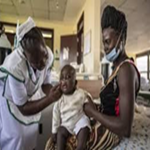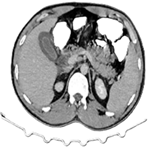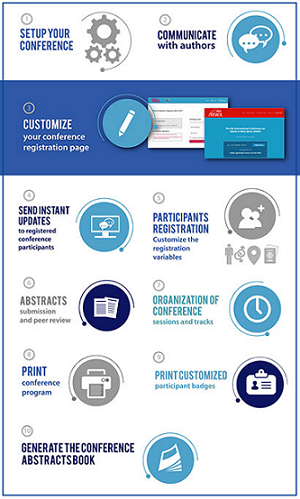Investigating a cholera outbreak in Kaiso Fishing Village, Hoima District, Uganda, October 2015
Monica Okuga, David Were Oguttu, Allen Eva Okullo, Meeyoung Mattie Park, Charles Perry Ko, Joseph Asamoah Frimpong, Bao-Ping Zhu, Alex Riolexus Ario
Corresponding author: Monica Okuga, Makerere University School of Public Health, Makerere University Centre for Maternal, Newborn and Child Health, Kampala, Uganda 
Received: 22 Feb 2018 - Accepted: 13 Apr 2018 - Published: 18 May 2018
Domain: Water resources,Infectious diseases epidemiology,Public health
Keywords: Outbreak investigation, cholera, Uganda
This article is published as part of the supplement African Case Studies for Public Health - Volume 2, commissioned by African Field Epidemiology Network.
©Monica Okuga et al. Pan African Medical Journal (ISSN: 1937-8688). This is an Open Access article distributed under the terms of the Creative Commons Attribution International 4.0 License (https://creativecommons.org/licenses/by/4.0/), which permits unrestricted use, distribution, and reproduction in any medium, provided the original work is properly cited.
Cite this article: Monica Okuga et al. Investigating a cholera outbreak in Kaiso Fishing Village, Hoima District, Uganda, October 2015. Pan African Medical Journal. 2018;30(1):14. [doi: 10.11604/pamj.supp.2018.30.1.15281]
Available online at: https://www.panafrican-med-journal.com//content/series/30/1/14/full
Supplement 
Investigating a cholera outbreak in Kaiso Fishing Village, Hoima District, Uganda, October 2015
Investigating a cholera outbreak in Kaiso Fishing Village, Hoima District, Uganda, October 2015
Monica Okuga1,2,&, David Were Oguttu3, Allen Eva Okullo3, Meeyoung Mattie Park4, Charles Perry Ko4, Joseph Asamoah Frimpong5, Bao-Ping Zhu6, Alex Riolexus Ario3,7
1Makerere University School of Public Health, Kampala, Uganda, 2Makerere University Centre for Maternal, Newborn and Child Health, Kampala, Uganda, 3Uganda Public Health Fellowship Program, Kampala, Uganda, 4Rollins School of Public Health, Emory University, Atlanta, USA, 5African Field Epidemiology Network, Accra, Ghana, 6US Centres for Disease Control and Prevention, Kampala, Uganda, 7Ministry of Health, Kampala, Uganda
&Corresponding author
Monica Okuga, Makerere University School of Public Health, Makerere University Centre for Maternal, Newborn and Child Health, Kampala, Uganda
Globally, even though improvements have been made to effective surveillance and response, communicable diseases such as cholera remain high priorities for national health programs, especially in Africa. High-quality surveillance information coupled with adequate laboratory facilities are effective in curbing outbreaks from such diseases, ultimately reducing morbidity and mortality. One way of building this capacity is through simulation of response to such health events. This case study based on a cholera outbreak investigated by FETP trainees in October 2015 in Uganda can be used to reinforce skills of frontline FETP trainees and other novice public health practitioners through a practical simulation approach. This activity should be completed in 2.5 hours.
General instructions: this exercise is led by 1-2 facilitators with a class size of 8-15 students. It is participatory and the facilitator should encourage all students to take part through reading out aloud, attempting the questions, sharing answers aloud, giving opinions and critiquing each other. In some cases, role plays may be performed.
Audience: District Surveillance officers, Field Epidemiology Training Program (FETP) trainees
Prerequisites: before using this case study, case study participants should have received lectures in outbreak investigation and basic biostatistics. They should also be proficient in English and conversant with Microsoft Excel.
Materials needed: laptop with Microsoft Excel, flipchart/white board, markers
Level of training and associated public health activity: Novice – outbreak investigation
Time required: 2.5 hours
Language: English
- Download the case study student guide (PDF - 880 KB)
- Request the case study facilitator guide.
The authors declare no competing interest.
We would like to acknowledge the Africa Field Epidemiology Network and Emory University for the support in case study design and development. We would also like to thank the Hoima District Health Management Team and the outbreak investigation and response team.
- UBOS. National population and Housing census 2014, Kampala, Uganda. Uganda Bureau of Statistics. 2014. Google Scholar
- David Oguttu W, OKullo A, Bao-Ping Zhu, Alex Ario. Cholera Outbreak in Kaiso Fishing Village, Hoima District Uganda. 2015. Google Scholar
- CDC. Principles of Epidemiology in Public Health. Section 2: Steps of an outbreak investigation Atlanta, GA 2012. Third Edition. Cited 23rdrd August 2016. Accessed on 22 Feb 2018.
- CDC. Cholera-Vibio Cholerae infection: Prevention and Control Atlanta, GA. CDC. 2014. Cited 23rd August 2016. Accessed on 22 Feb 2018.
- Uganda MoH. Technical Guidelines for Integrated Disease Surveillance and Response. Kampala, Uganda. 2012; 251-254. Google Scholar









